The 25 Biggest Blunders in MLB History
Joel Reuter@JoelReuterBRThe 25 Biggest Blunders in MLB History

As a kid, many dream of finding themselves in Game 7 of the World Series with a chance to win it for their team while playing in the backyard.
For the rare few who find themselves in that very situation when they grow up, it is often a moment that can define a player's career.
For some, they will forever be heroes for their respective franchises, while others while draw flinches from their fanbase when their names are even mentioned.
It is not just players who are susceptible to committing memorable blunders, however, as coaches can make poor decisions, front-office personnel can make foolish trades, a pennant race can fall embarrassingly short, or a single game or even season can leave an entire country disappointed.
So here are the 25 biggest blunders in MLB history.
No. 25: Throwing the Ball into the Stands with Two Outs

This is an occurrence that has happened on a number of occasions, most recently by Milton Bradley when he was a member of the Chicago Cubs in 2009.
Regardless of the situation, there is never an excuse for not knowing how many outs there are in an inning, and this is among the most embarrassing, but also most commonly occurring, blunders in all of baseball.
No. 24: Jose Canseco: Home Run off His Head
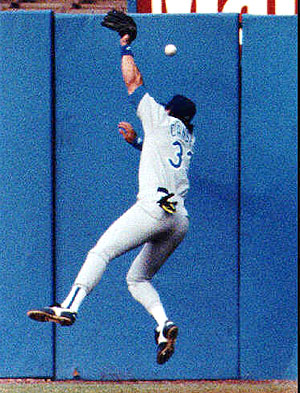
On May 26, 1993, Canseco took his position in right field like any other day.
However, on that day he would make what has gone down as the most widely shown and arguably the most hilarious blooper in baseball history.
When the Indians' Carlos Martinez hit a fly ball, Canseco broke back on it but lost track of it when he hit the warning track.
The ball promptly hit him on the top of the head and bounced over the fence for a home run.
No. 23: 2002 All-Star Game Tie

The MLB All-Star game is supposed to be for the fans, so when the 2002 Midsummer Classic ended in a bottom-of-the-11th tie to a chorus of fans chanting "Let Them Play," it is safe to say that can be considered a failure.
When the game went to extra innings, and Freddy Garcia and Vicente Padilla represented the final available pitchers for each team, things started to get interesting.
After the AL failed to score in the top of the 11th, both managers met with Commissioner Bud Selig, and he determined that if the NL failed to score in the bottom of the inning, the game would be ruled a tie.
The NL went down 1-2-3, and the fans were sent home with the inconclusive result of a tie. This led to the implementing of a rule granting home-field advantage in the World Series to the league that won the All-Star game in an attempt to make the game matter.
No. 22: Mickey Owen: 1941 World Series Dropped Third Strike
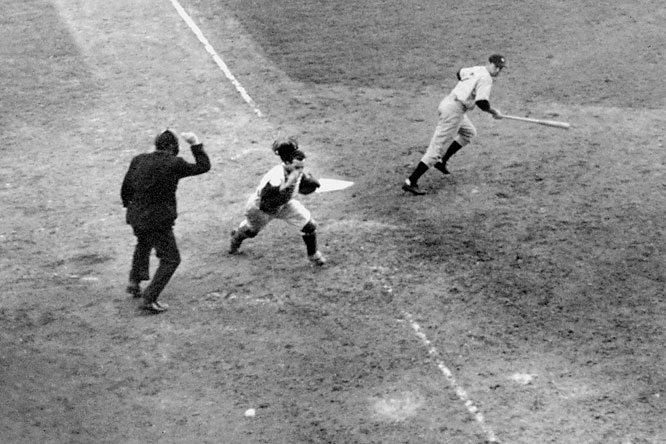
In Game 4 of the 1941 World Series, the Dodgers were clinging to a 4-3 lead going into the ninth inning with a chance to even the series at 2-2 with a win.
Dodgers reliever Hugh Casey quickly got two outs, and had a full count on Tommy Henrich when he threw a wicked curveball that Henrich swung and missed at for strike three.
However, the catcher, Owen, mishandled the pitch and it made it all the way to the backstop as Henrich made it safely to first base.
The Yankees went on to score four runs in the inning and win the game 7-4. They clinched the title the following day, as Owen went down as the goat.
No. 21: Red Sox GM Lou Gorman Trades Jeff Bagwell to Astros
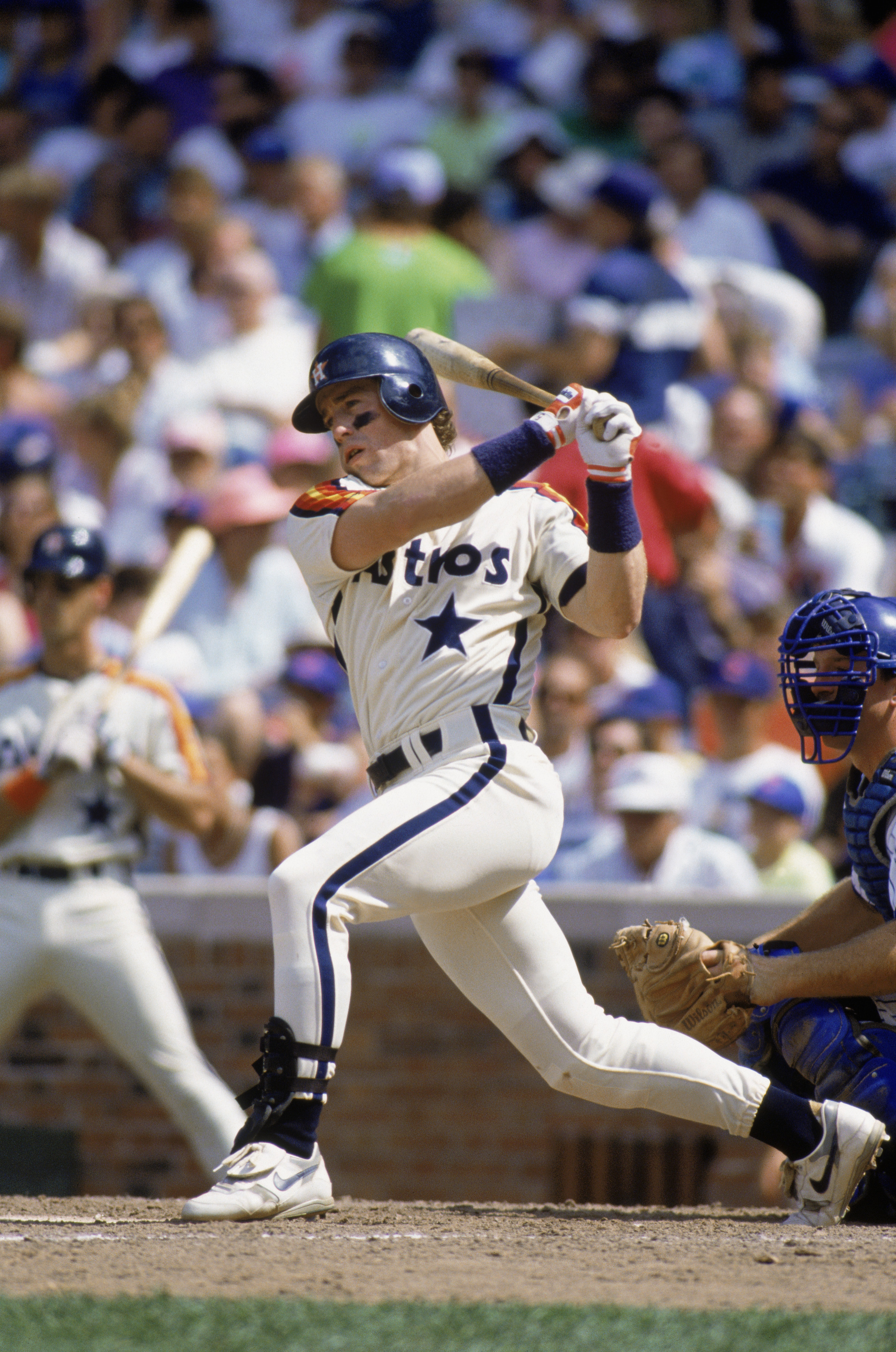
In the heat of a playoff push at the 1991 trade deadline, the Red Sox dealt promising prospect Jeff Bagwell for reliever Larry Andersen in an effort to shore up their bullpen.
Andersen had an impressive 1.95 ERA in 73.2 innings with the Astros, and he was just as good with the Red Sox with a 1.23 ERA in 22 innings. The Red Sox succeeded in making the playoffs, but were swept by the Athletics. Andersen left for San Diego in the offseason as a free agent.
Bagwell spent the rest of the 1990 season in the minors, but won the starting first-base job in 1991 when he went on to win the NL Rookie of the Year. He put together a fantastic career, and his line of .297 BA, 449 HR, 1,529 RBI may be enough to earn him Hall-of-Fame enshrinement.
No. 20: Donnie Moore: 1986 ALCS Blown Save, Loss
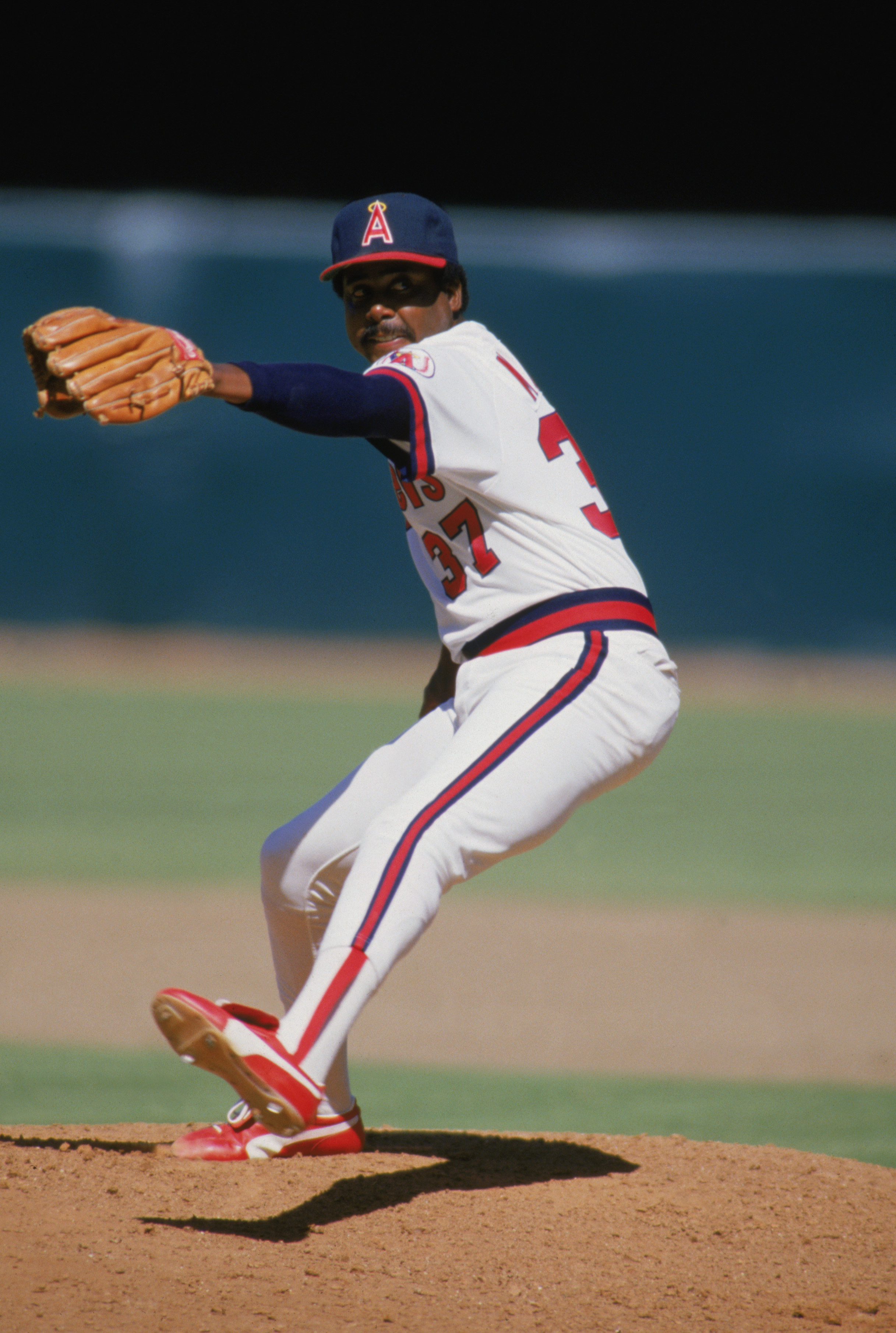
With the Angels leading the Red Sox three games to one in the 1986 ALCS, the Angels took a 5-2 lead into the ninth inning. After the lead was closed to 5-4, the Angels brought in Moore with two outs and a runner on first base.
Dave Henderson promptly hit a two-run home run to give the Red Sox the lead. Still, the Angels were able to score a run in the bottom of the ninth inning to send the game to extra innings.
Moore stayed in the game, and after making it through the 10th inning unscathed, a sacrifice fly by Henderson in the 11th inning gave Moore a blown save and the loss.
The momentum of the series had shifted, and the Red Sox took the next two games of the series to prevent the Angels from what would have been their first trip to the World Series.
No. 19: Mitch Williams: 1993 World Series Blown Save, Series

During the 1993 season, Williams was one of baseball's top closers as he registered a career-high 43 saves in helping the Phillies to the World Series.
With the Blue Jays up 3-2 in the best-of-seven series, Williams took the hill into the ninth inning of Game 6 with the Phillies clinging to a 6-5 lead.
With runners on first and second and one out, Joe Carter stepped to the plate for the Blue Jays and he launched Williams' 2-2 offering for a World Series-winning home run in one of the most memorable moments in baseball history.
Williams immediately became a goat and he was out of baseball six saves and three seasons later.
No. 18: Jeremy Giambi: 2001 ALDS Didn't Slide
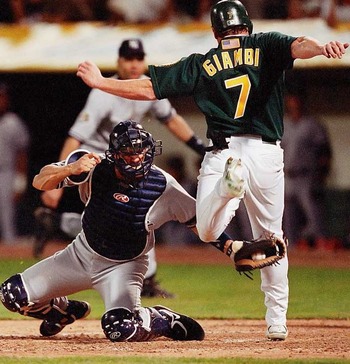
This could also crack the list as one of the most impressive plays in baseball history on the other end, but Giambi not sliding certainly falls into the blunder category.
After winning the first two games of the series, the Athletics trailed 1-0 late in Game 3. It looked as though Giambi was set to score the tying run following a Terrence Long single, but Jeter made a fantastic play getting to the throw from the outfield and flipping it to the catcher who tagged Giambi just as he was about to cross home.
No chance he is out if he just slides.
From there, the Yankees won that game, and then the next two to eliminate the Athletics.
No. 17: Cubs GM John Holland Trades Lou Brock to Cardinals

In the infamous "Brock for Broglio" deal, the Cubs dealt future Hall of Famer Lou Brock to their rivals the Cardinals for a package of players that amounted to nothing.
Brock had shown flashes of his ability in two full seasons with the Cubs, but the team chose to flip him for Ernie Broglio and a pair of prospects in an attempt to shore up their rotation.
Broglio was coming off an 18-win season and also had a 21-win season to his credit.
However, he went just 4-7 after the trade, while Brock hit .348 BA, 12 HR, 44 RBI, with 33 SB as he was on his way to becoming one of the top leadoff hitters of all time.
No. 16: 1978 Boston Red Sox Collapse
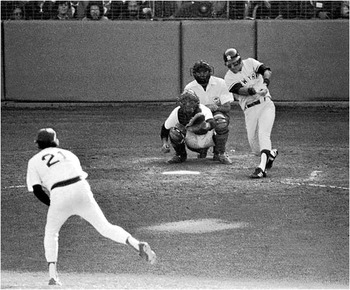
With a 14-game lead over the rival Yankees in July, the Red Sox slowly gave way the rest of the season and the Yankees capped their comeback with a four-game sweep of the Red Sox at home, as the season ended with the two teams tied and a one-game playoff was necessary.
The difference in the one-game playoff proved to be a seventh-inning home run by a one Bucky "Bleeping" Dent, as one of the most memorable home runs in Yankees history capped off the Red Sox major collapse.
No. 15: Fred Merkle: "Merkle's Boner"

In 1908, in a crucial game between the Giants and the Cubs, the Giants came to the plate in the bottom of the ninth with the game tied 1-1.
With two outs and Moose McCormick on first base, Merkle singled to right field to advance the winning run to third base.
The next hitter, Al Bridwell, singled to center field on the first pitch he saw and McCormick scored what seemed to be the winning run.
As fans poured onto the field, Merkle turned towards the dugout before touching second base and the ball was thrown into second, where Merkle was forced out for the final out of the inning.
The game was then called due to darkness, and the Cubs eventually won the game and the pennant, thanks in large part to Merkle's gaffe.
No. 14: Leon Durham: 1984 NLCS Missed Ground Ball
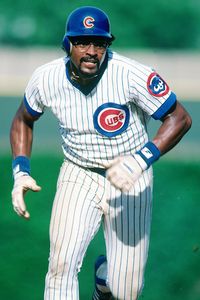
The Cubs looked on their way to the World Series in 1984, as they led the Padres 2-0 in the best-of-five series. However, the Padres won consecutive games to even the series and force a decisive fifth game.
After the Cubs jumped out to a 3-0 lead through the first six innings, the Padres trimmed the deficit to 3-2 in the sixth inning, and that set up Durham's costly error in the bottom of the seventh inning.
Carmelo Martinez led off the inning with a walk, Garry Templeton sacrificed him over, and that brought up pinch hitter Tim Flannery.
Flannery hit a sharp ground-ball to Durham at first and it went right between his legs, scoring Martinez and tying things up. The Padres would go on to a 6-3 win and the NL pennant.
No. 13: Reds GM Bill DeWitt Trades Frank Robinson to Orioles
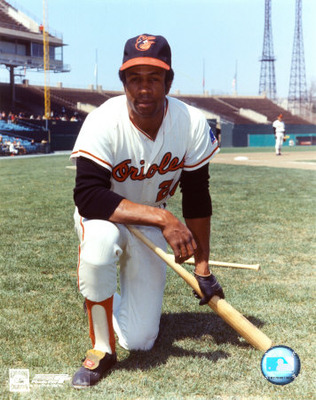
Prior to the 1966 season, Reds owner Bill DeWitt made the decision to part with his 30-year old superstar Frank Robinson in an effort to bolster his pitching staff, picking up Orioles ace Milt Pappas in the deal.
The trade was met with immediate outrage from the Reds fan base, and in an attempt to justify the move, DeWitt said that Robinson was "an old 30."
Robinson immediately made DeWitt eat his words, as he took home the AL Triple Crown with a line of .316 BA, 49 HR, 122 RBI.
He went on to play six seasons with the Orioles, hitting .300 BA, 179 HR, 545 RBI over that span.
No. 12: 1969 Chicago Cubs Collapse
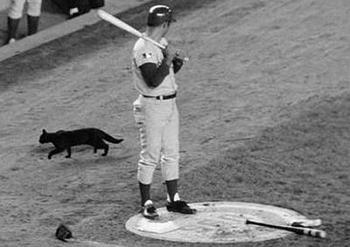
In what would be a 92-win season, the Cubs spent a grand total of 155 days in first place and seemed destined to make a playoff run.
After Ken Holtzman threw a no-hitter on Aug. 19, the Cubs took their biggest division lead of the season, up 8.5 games on the Cardinals and 9.5 on the Mets.
However, they went on to lose 17 of their last 25 games and eventually finished a full eight games behind the "Miracle Mets," which won 38 of their last 49 games.
This may be the most talked-about collapse in major-sports history, and it only fueled Cubs' fans beliefs in the Curse of the Billy Goat.
No. 11: John McNamara: 1986 World Series
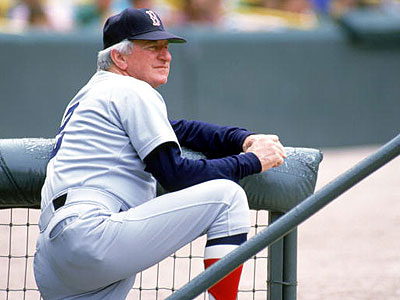
The Bill Buckner botched ground ball goes down as the biggest blunder in baseball history, but had it not been for a poor decision by McNamara, the Red Sox manager, it may never have happened.
With Buckner playing on two bad ankles, McNamara had been consistently using Dave Stapleton as a late-inning defensive replacement for Buckner, but for some reason, when it mattered most he chose to leave Buckner out there.
Oops.
No. 10: 1995 California Angels Collapse
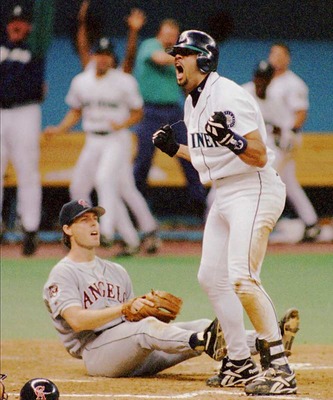
On Aug. 16, the Angels held what seemed to the safest of leads with a 10.5-game lead in the AL West.
It was such a big lead in fact, that the team went on a nine-game losing streak from August 25 to September 3, yet still held a six-game lead over the Seattle Mariners.
The slide continued on into September as they experienced their second nine-game slide from Sept. 13-23. They did manage to rebound in time to win their final five games, however, and force a one-game playoff with the Mariners.
That game would be all Randy Johnson, though, as he held the Angels to one run on three hits, while striking out 12 in a complete-game effort.
The Mariners would go on to upset the Yankees in the ALDS for perhaps the biggest moment in team history, while the Angels simply headed home for the year.
No. 9: Grady Little: 2003 ALCS
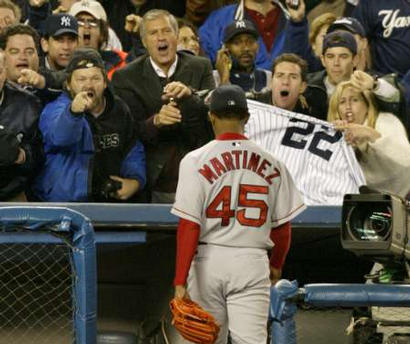
With the World Series on the line in Game 7 of the ALCS, the Red Sox sent their ace Pedro Martinez to the hill in an effort to put away the Yankees.
Martinez threw a fantastic game through seven innings, giving up just two runs while striking out eight, and with over 100 pitches thrown, all signs pointed to Martinez's day being over as he received congratulations from his teammates while the Red Sox hit in the top of the eighth.
However, Little opted to send his ace back to the hill to open the bottom of the eighth. After retiring the first batter, Martinez gave up a double, single, double, and double before Little finally yanked him with the score tied 5-5.
That set up Aaron Boone's 11th-inning walk-off home run that sent the Yankees to the World Series and sent the Red Sox home.
No. 8: 1964 Philadelphia Phillies Collapse
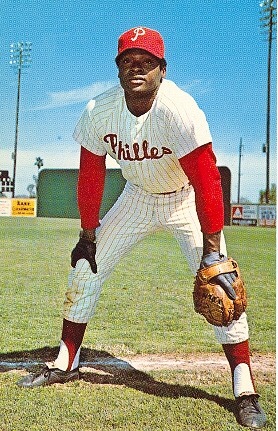
Led by Rookie of the Year Dick Allen and ace Jim Bunning, the Phillies had a very good team during the 1964 season, and they seemed well on their way to the NL pennant when they held a 6.5-game lead over the Cardinals with 12 games to play.
However, the team dropped 10-straight games including a crucial three-game sweep at the hands of the Cardinals, and they failed to capture the pennant.
This collapse has become known as the "Phold" and goes down as the biggest collapse in the history of the MLB.
No. 7: Fred Snodgrass: "Snodgrass's Muff"
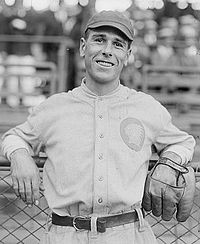
From 1911-1913, the Giants played in three-consecutive World Series' under legendary manager John McGraw, and they managed to lose all three of them. The 1912 series loss is often blamed on one man: Fred Snodgrass.
In the decisive game of the series, in the bottom of the 10th with the Giants leading 2-1, the Red Sox first batter, Clyde Engle, hit a routine fly ball to Snodgrass, but it bounced right out of his glove and Engle wound up on second base.
The Red Sox went on to score two runs in the inning against the legendary Christy Mathewson as the Giants dropped the series.
No. 6: Alex Gonzalez: 2003 NLCS Botched Groundball

The 2003 Cubs are known for their epic collapse against the Marlins, and much of the blame has been placed on the infamous Steve Bartman, the fan who reached into play and interfered with a foul ball.
However, two batters later with one out and runners on first and second, Miguel Cabrera hit a tailor-made double-play ball to Gonzalez at shortstop and the usually sure-handed fielder booted it.
The Cubs imploded from there and set the tone for blowing the rest of the series.
No. 5: Babe Ruth: 1926 World Series Caught Stealing
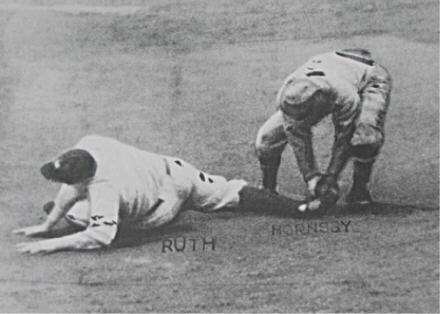
In Game 7 of the 1926 World Series, with the Yankees trailing 3-2 in the bottom of the ninth inning, Ruth drew a walk with two outs to bring Bob Meusel to the plate with a chance to keep the Yankees hopes alive.
However, Ruth decided to try to steal second base and he was gunned down by Cardinals catcher Bob O'Farrell to end the World Series right then and there.
This is the first-and-only time a series game has been ended with a caught stealing.
No. 4: Reds GM John T. Brush Trades Christy Mathewson to Giants

The Reds dealt Mathewson, a then 19-year-old with no major-league experience, to the Giants for Amos Rusie.
Rusie had 246 career wins, but he had not pitched in two seasons and was 30 years old at the time of the deal.
Mathewson went on to win 373 games, while totaling 13 seasons with at least 20 wins and four with over 30 wins.
Rusie, on the other hand, pitched in just three games for the Reds the next season, posting a 8.59 ERA and he retired following that season.
Hands down, one of the most lopsided trades ever.
No. 3: Bill Buckner: 1986 World Series "It Gets Through Buckner"
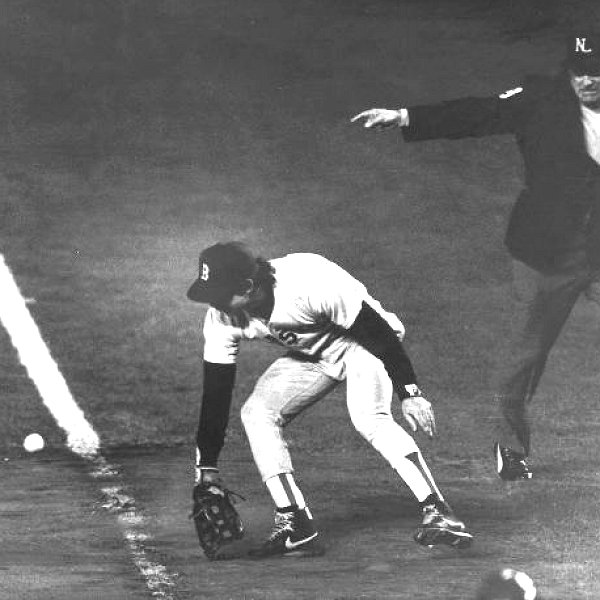
This one needs no explanation, as Buckner's missed groundball in Game 6 of the 1986 World Series is the most infamous blunder in baseball and all of sports history.
However, pitchers Calvin Schiraldi and Bob Stanley both had batters down to two strikes with a chances to end the game and could also be blamed.
Also, with Buckner playing on two bad ankles, Red Sox manager John McNamara had been regularly using Dave Stapleton as a defensive replacement at first base and he decided against it in this particular game.
So while Buckner gets the "glory", there is plenty of blame to go around.
No. 2: 1994 Strike-Shortened Season
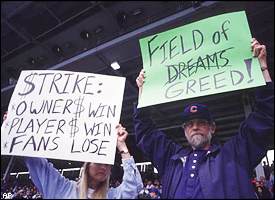
When the players went on strike in 1994, and the season was eventually cancelled leaving the league without a World Series for the first time since 1904, it left baseball with a black eye that it took years to recover from.
It was all about money. Money on the part of the owners and money on the part of the players, and that did not sit well with baseball fans.
Not only that, but a number of players were on pace to do some special things that season. Among them was Tony Gwynn who was hitting .394 when the season ended on Aug. 11, Matt Williams who was on pace for 61 home runs, and a number of other players who were having career years before the season was cut short.
No. 1: Red Sox GM Harry Frazee Sells Babe Ruth to Yankees
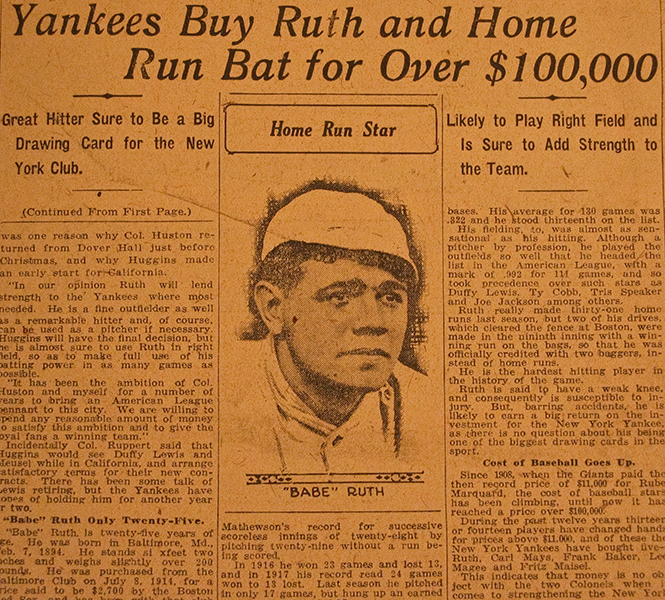
Despite the fact that he was a pitcher during most of his time with the Red Sox, and a good one, it was clear that Ruth was the most exciting hitter in all of baseball even then, and that he would soon change the game.
However, Red Sox owner and theater-enthusiast Harry Frazee chose to sell Ruth to the Yankees for the then-princely sum of $100,000. It is common lore that he used that money to put on a production of the play No, No Nanette although that has never been settled one way or the other.
One thing was sure, Ruth was the biggest draw in all of baseball, and he more than made good on the Yankees investment.
The Red Sox, meanwhile, would not win the World Series again until 2004 as they were struck with the "Curse of the Bambino."